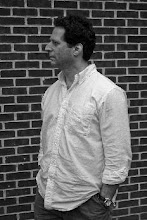
You know that strange nagging feeling you get sometimes when you meet someone new--that you've seen this person somewhere before? Eventually you might figure it out--the person has a resemblance to someone else you know, either a celebrity or a personal acquaintance. I had just this nagging feeling about one of my students last year. Eventually, to my great relief, I figured it out--he looked just like Dwayne Johnson's (hypothetical) younger, slimmer brother.
When you "get" the resemblance, you might be a little surprised--it may span different races, different ages, even different genders. My advisor said it once: "there are fewer possible faces than there are people walking around."
I thought of a game one could play to test his theory. Take a collection of passport photos. Process them to eliminate differences in skin tone, hair style, or size. Cut each into a top half and a bottom half. The goal is to match up the top and bottom halves. Who wants to bet that you could do much better than random matching?
Another variation on this game: make two sets of photos and have two players (or teams of two players). The game this time is that one member of the team picks a photo at random and describes the face, and the other member of the team needs to find the matching photo based solely on the description.
I suspect that the best strategy in this game is not to describe someone as "eyes close together, nose 35% larger than normal, etc." but rather as "Dwayne Johnson's slender younger brother," or "the missing love child of Walter Cronkite and Britney Spears," or so on.
Since one of the things I'm not very good at is remembering names and faces, I've often wished for a concise, yet precise way of verbally describing a face--again, not in terms of dimensions but in terms of the impression on the viewer: a face language, so to speak. Think of what a boon such a language would be, for example, to describe bank robbers.
I have no good idea how such a language could be constructed, but the proof that it should exist lies in the art of the caricature. A good caricaturist (for example, Mort Drucker's work above) can draw a face recognizable as a unique individual with a few deft strokes. Hirschfeld's work was positively cartoonlike and yet instantly recognizable. And maybe one way to identify such a language is to set a pair of caricaturists to play the face matching game and analyze what they say to each other.




No comments:
Post a Comment